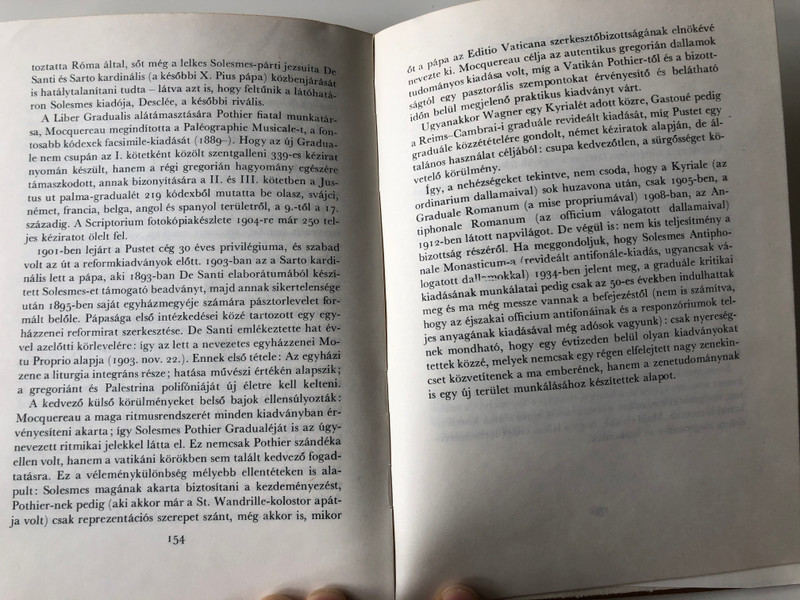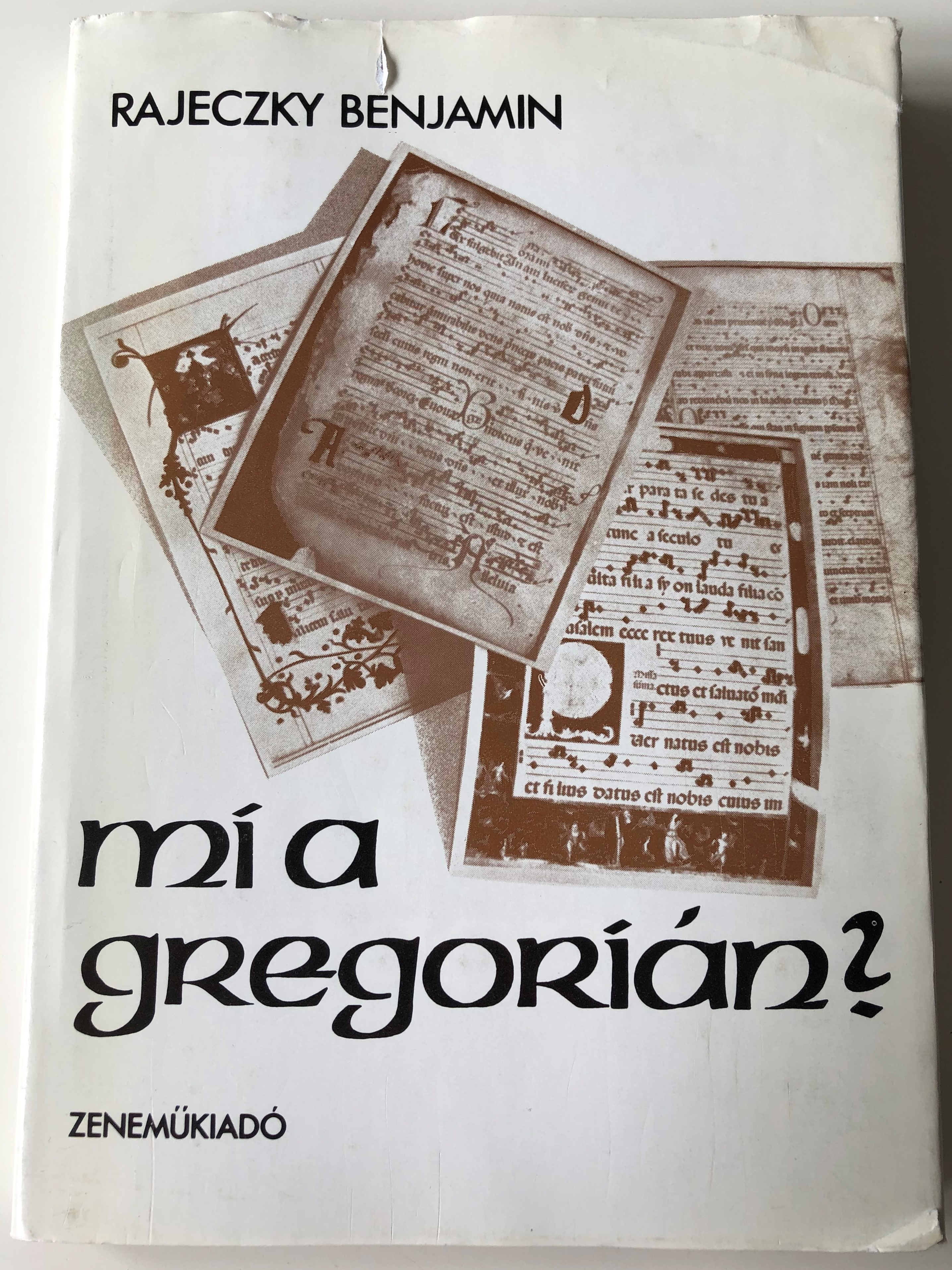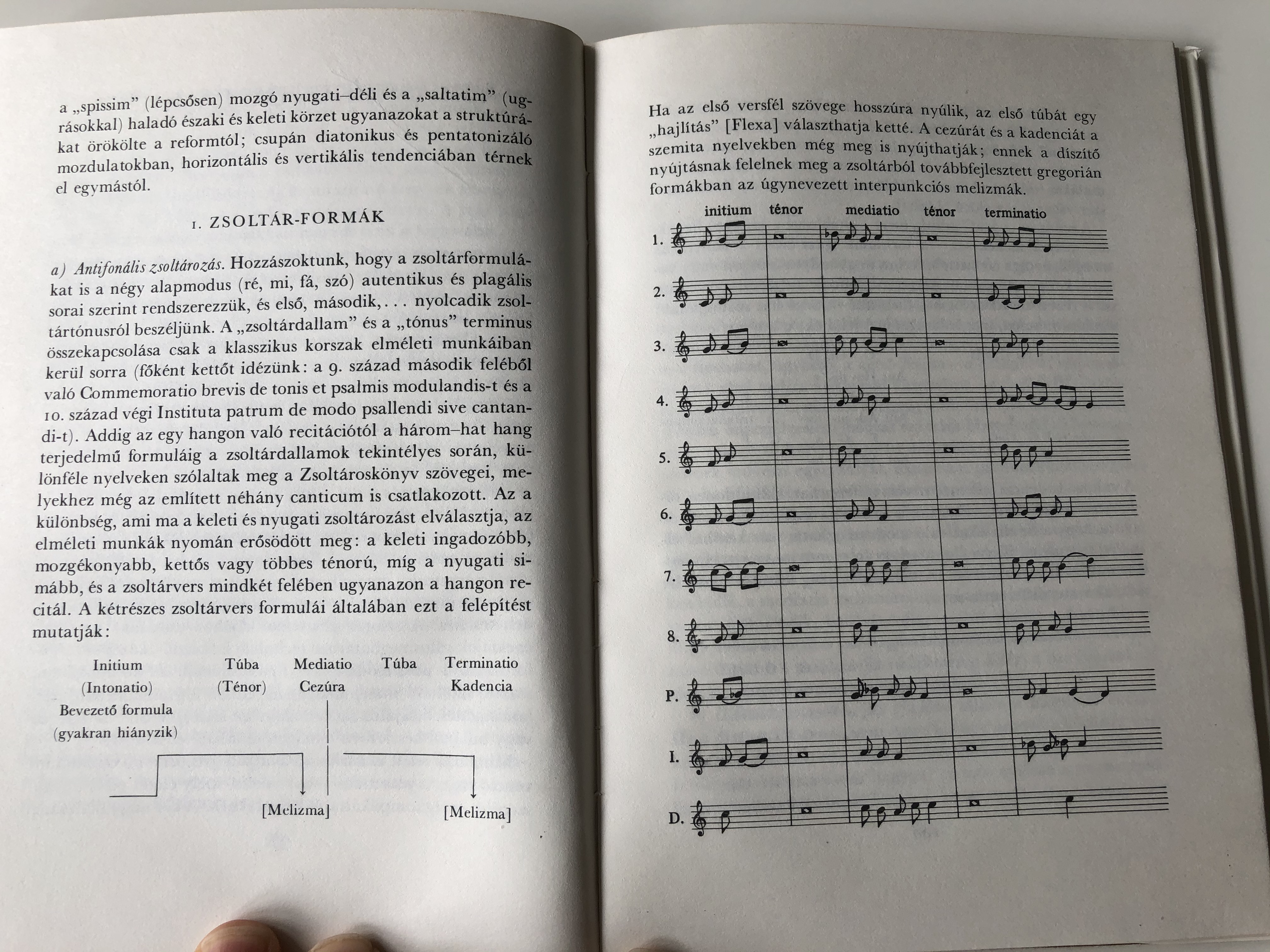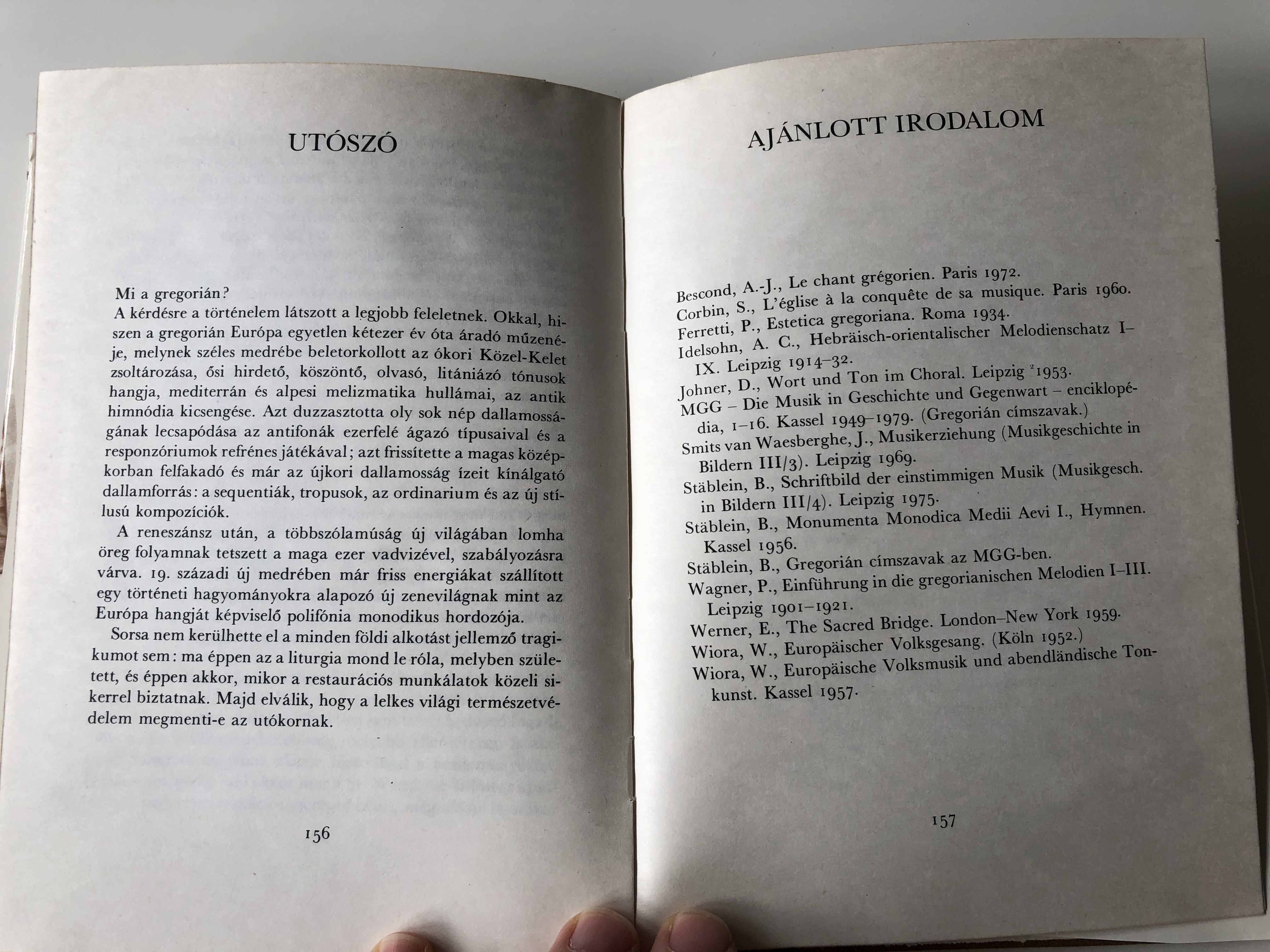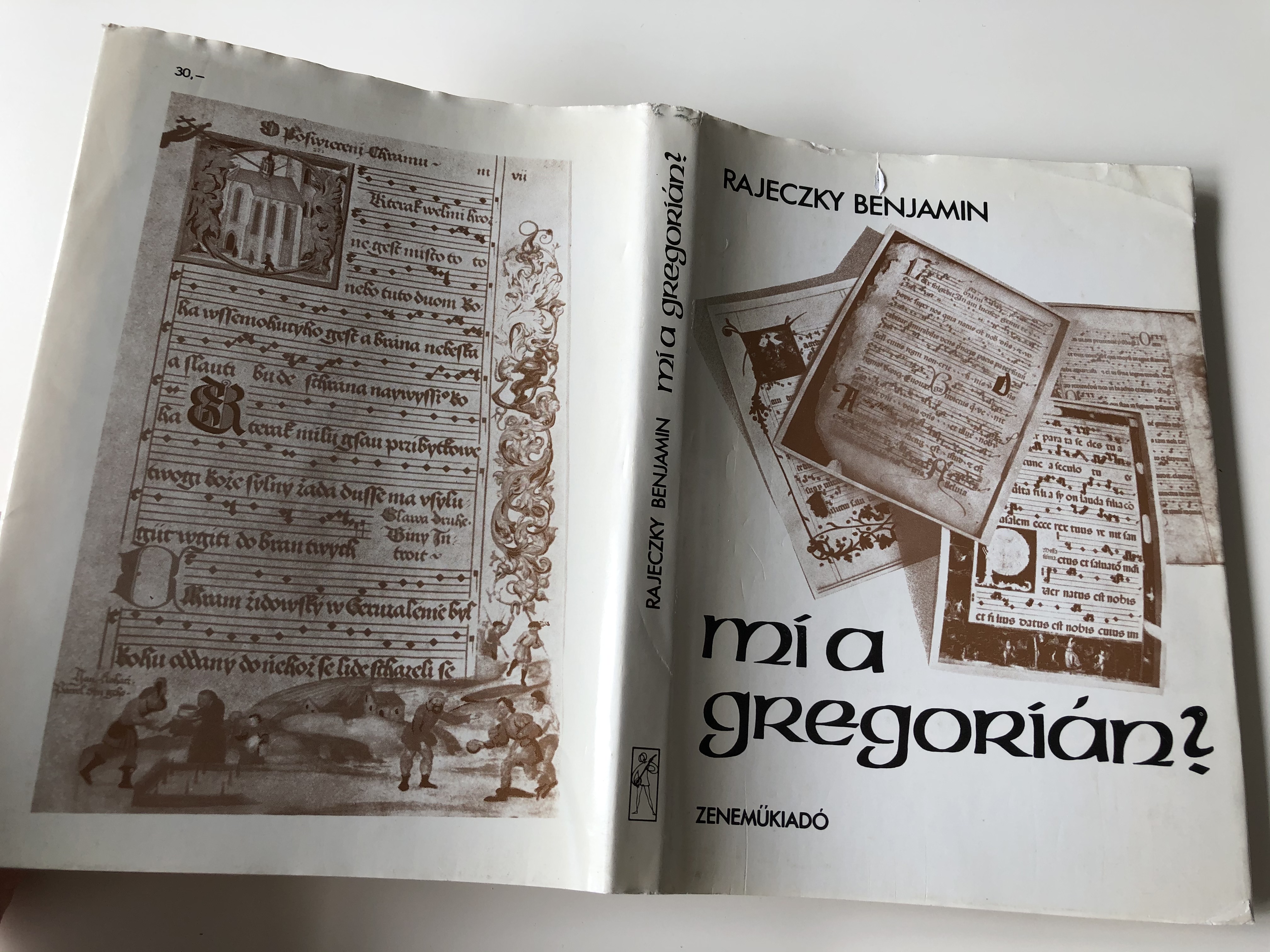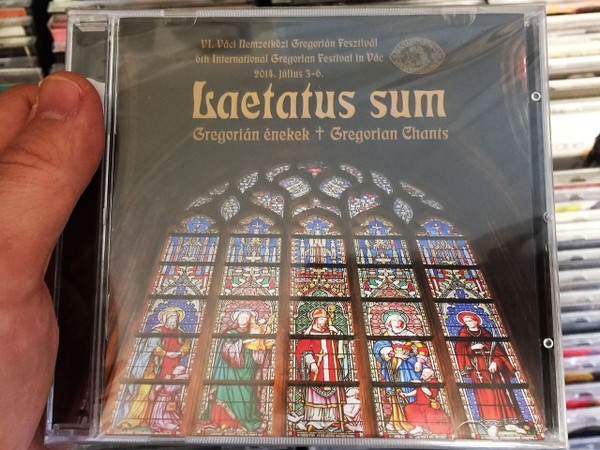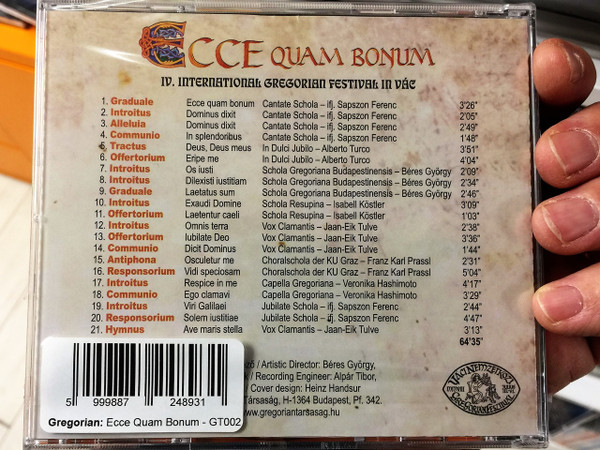Description
Mi a gregorián – Rajeczky Benjamin
What is Gregorian – History and Style of Gregorian Music
A gregorián ének története és stílusa – részletes elemzés egy elismert zenetudóstól.
Termékinformáció | Product Information
- Cím | Title: Mi a gregorián
- Szerző | Author: Rajeczky Benjamin
- Kiadó | Publisher: Zeneműkiadó
- Kiadás éve | Year of Publication: 1982
- Formátum | Format: Keménytáblás / Hardcover
- Oldalak száma | Pages: 157
- ISBN-13: 978-9633304495
- ISBN-10: 9633304490
- Nyelv | Language: Magyar (Hungarian)
- Műfaj | Genre: Zeneelmélet, egyházzene | Music Theory, Sacred Music
Áttekintés | Overview
HU: Mi a gregorián című könyvében Rajeczky Benjamin, a magyar zenetudomány kiemelkedő alakja, részletesen bemutatja a gregorián ének eredetét, fejlődését és stílusjegyeit. A kötet világos és érthető módon magyarázza el a gregorián zene történelmi kontextusát, liturgikus szerepét és művészi értékét.
A könyv különösen hasznos lehet zenészek, kórusvezetők, egyházi személyek és mindenki számára, aki mélyebben szeretné megérteni a keresztény egyházi zene egyik legősibb és legjelentősebb műfaját.
EN: What is Gregorian by Benjamin Rajeczky is an in-depth exploration of the origins, development, and stylistic characteristics of Gregorian chant. Written by one of Hungary’s most distinguished musicologists, this book provides a clear and comprehensive analysis of Gregorian music’s historical context, liturgical function, and artistic significance.
This book is an essential resource for musicians, choir directors, clergy, and anyone interested in understanding one of the oldest and most influential genres of Christian sacred music.
Termékjellemzők | Product Features
HU:
✔ A gregorián zene történetének és stílusának részletes bemutatása.
✔ Kiváló forrás zenészek, kórusvezetők és egyházi szakértők számára.
✔ Egy elismert magyar zenetudós munkája.
✔ Világos, érthető magyarázatok és zeneelméleti háttér.
EN:
✔ Detailed exploration of Gregorian music history and style.
✔ Excellent resource for musicians, choir directors, and religious scholars.
✔ Written by a renowned Hungarian musicologist.
✔ Clear and accessible explanations with music theory insights.
Érdekességek | Interesting Facts
HU: A gregorián ének a római katolikus egyház hivatalos egyházi zenéje, amely a 9. századra nyúlik vissza, és a latin liturgia részeként vált ismertté.
EN: Gregorian chant is the official sacred music of the Roman Catholic Church, dating back to the 9th century and becoming an integral part of the Latin liturgy.
HU: Rajeczky Benjamin a magyar egyházi zene egyik legfontosabb kutatója volt, aki jelentős szerepet játszott a gregorián zene hazai tanulmányozásában és népszerűsítésében.
EN: Benjamin Rajeczky was one of Hungary’s most influential scholars of sacred music, playing a key role in the study and promotion of Gregorian chant in Hungary.
HU: A könyv részletes elemzéseket és kottapéldákat tartalmaz, hogy az olvasók jobban megértsék a gregorián dallamok struktúráját.
EN: The book includes detailed analyses and musical notations to help readers better understand the structure of Gregorian melodies.
Kiadó | Publisher
HU: Kiadó: Zeneműkiadó (1982)
EN: Publisher: Zeneműkiadó (1982)
Oszd meg véleményed! Ha olvastad a könyvet, írj róla értékelést, hogy mások is felfedezhessék ezt az értékes zenei munkát.
Share your thoughts! If you've read this book, leave a review to help others discover this valuable music study
Hashtagok | Hashtags
#GregoriánZene #RajeczkyBenjamin #Egyházzene #Zeneelmélet #LiturgikusZene #GregorianChant #ChurchMusic #SacredMusic #MusicTheory #HungarianMusicology
Tartalom / Contents:
| Előszó | 5 |
| Legenda | 7 |
| Ars musica - hangjegyírás nélkül | 10 |
| Őstörténet | 14 |
| Hellenista és keresztény zene | 22 |
| Dallamok | 28 |
| A liturgikus zene központjai | 32 |
| Dallamok | 52 |
| Egység felé | 65 |
| Gregorián és ars musica | 75 |
| Hangjegyírás | 89 |
| A klasszikus dallamkincs | 97 |
| Műzene és népzene | 124 |
| Új műfajok, új stílus | 128 |
| Előadás | 147 |
| Reformok | 150 |
| Utószó | 156 |
| Ajánlott irodalom | 157 |
Gregorian chant is the central tradition of Western plainchant, a form of monophonic, unaccompanied sacred song in Latin (and occasionally Greek) of the Roman Catholic Church. Gregorian chant developed mainly in western and central Europe during the 9th and 10th centuries, with later additions and redactions. Although popular legend credits Pope Gregory I with inventing Gregorian chant, scholars believe that it arose from a later Carolingian synthesis of Roman chant and Gallican chant.
Gregorian chants were organized initially into four, then eight, and finally 12 modes. Typical melodic features include a characteristic ambitus, and also characteristic intervallic patterns relative to a referential mode final, incipits and cadences, the use of reciting tones at a particular distance from the final, around which the other notes of the melody revolve, and a vocabulary of musical motifs woven together through a process called centonization to create families of related chants. The scale patterns are organized against a background pattern formed of conjunct and disjunct tetrachords, producing a larger pitch system called the gamut. The chants can be sung by using six-note patterns called hexachords. Gregorian melodies are traditionally written using neumes, an early form of musical notation from which the modern four-line and five-line staff developed.[1] Multi-voice elaborations of Gregorian chant, known as organum, were an early stage in the development of Western polyphony.












